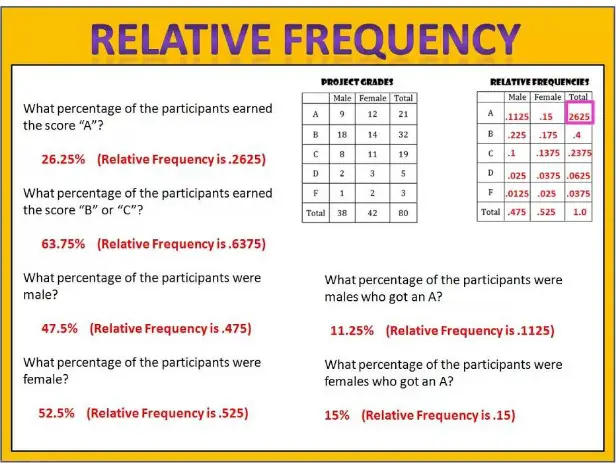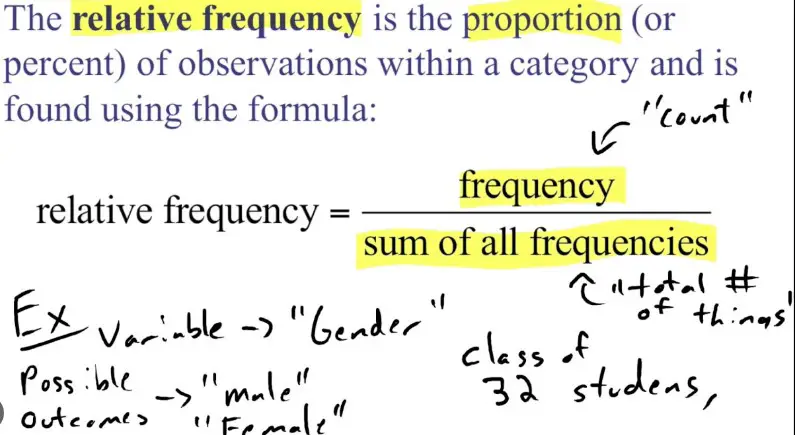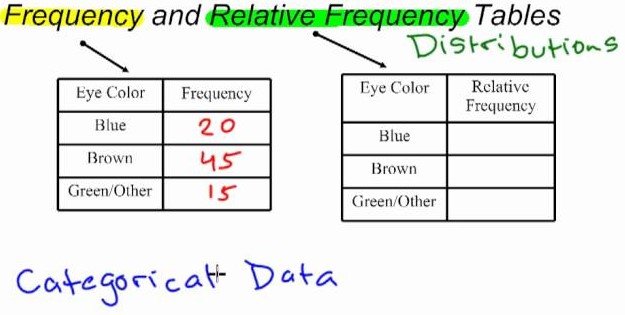If you’ve ever studied statistics, you’ve likely come across the terms “frequency” and “relative frequency. ” Although these terms are related, they have distinct meanings and uses that are important to understand. In this blog, we’ll discuss the difference between frequency and relative frequency, and how you can use them to understand data better.
Defining frequency and relative frequency

The difference between frequency and relative frequency can be summed up in one word: proportion. Frequency is the number of occurrences of a given event or item, while relative frequency is the proportion of the total number of events or items. For example, if you had a list of five items and each item occurred once, the frequency would be one, while the relative frequency would be one fifth, or 20%.
Relative frequency gives you a better picture of the proportion of each item in the list.
Examples of calculating frequency and relative frequency

Frequency and relative frequency are two important concepts in data analysis. Frequency is the number of times a particular event occurs in a given set of data.
For example, if there are 10 people in a room and 5 of them are wearing blue shirts, the frequency of blue shirts would be 5, and the relative frequency would be 0. 5 (5 divided by 10).
This is useful for understanding the proportion of a particular item or event in a data set.
Advantages and disadvantages of frequency and relative frequency
Frequency and relative frequency are two different ways to measure the occurrence of data within a given set. Frequency is the number of times a particular data point occurs within the set, while relative frequency is the proportion of times a particular data point occurs compared to the total data points within the set. For example, if there are 10 apples in a basket and 5 are red, the frequency of red apples is 5, while the relative frequency is 0.
5, or 50%. Both frequency and relative frequency are useful tools for understanding the distribution of data, but each has its own advantages and disadvantages.
Frequency is good for understanding the exact number of occurrences of data, while relative frequency is better for understanding the relative proportion of each data point compared to the whole. However, frequency can be difficult to compare across different sets of data, while relative frequency can be more easily compared and can provide more insight when trying to draw conclusions from data.
Applications of frequency and relative frequency
Frequency and relative frequency are two concepts used to measure the occurrence of an event in a given data set. Frequency is the total number of occurrences of a given event, while relative frequency is the ratio of a certain event to the total number of events.
For example, if a data set contains 10 people, and 3 of them are named John, then the frequency of the name John is 3, and the relative frequency is 3/10, or 30%. By understanding the difference between frequency and relative frequency, we can gain a better understanding of how often an event occurs in a given data set.
Common mistakes to avoid when comparing frequency and relative frequency
When comparing frequency and relative frequency, it is important to understand the difference between the two. Frequency is simply the number of times an event or item occurs. Relative frequency, on the other hand, is the number of times an event or item occurs divided by the total number of items.
Relative frequency, on the other hand, is the number of times an event or item occurs divided by the total number of items. In other words, relative frequency is the proportion of times an event or item occurs compared to the total number of items. This means that if you want to compare different items, you must compare their relative frequencies, not just their frequencies.
Otherwise, you may be missing important information about the relative importance of each item.
Summary of frequency and relative frequency
The difference between frequency and relative frequency is a matter of proportion. Frequency is the number of times an event occurs in a given period of time, whereas relative frequency is the number of times an event occurs divided by the total number of events. In other words, frequency is the raw count of an event, whereas relative frequency is the count of the event proportional to the total count.
In other words, frequency is the raw count of an event, whereas relative frequency is the count of the event proportional to the total count. For example, if there were 10 people in a room and three of them were wearing red, the frequency of people wearing red would be The relative frequency of people wearing red would be 0.
3 or 30%.
Bottom Line
The main difference between frequency and relative frequency is that frequency is the count of how often an event occurs in a given set of data, while relative frequency is the ratio of how often an event occurs compared to the total number of events. Frequency is expressed as a number, while relative frequency is expressed as a percentage or fraction.
Frequency is useful for describing the overall pattern of a distribution, while relative frequency is useful for comparing different distributions.

